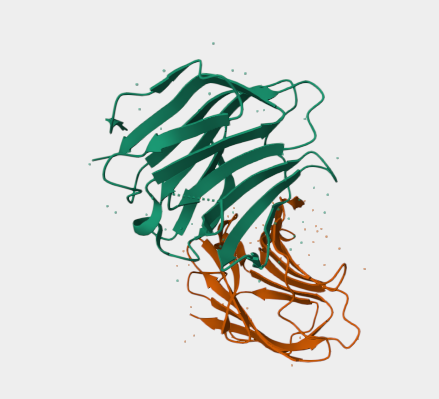Key features and details | |
Cat. No. | MABL-1646 |
Name | Anti-Galectin 9 mAbs |
Clone No. | AFD- RG9-35 |
From | Recombinant Antibody |
Isotype | Engineer antibody |
Application | Blocking, functional assays, IP, FC |
Species Reactivity | Mouse |
Basic Information | |
Specificity | This antibody is specific for murine galectin-9, a 40 kDa S-type lectin that is expressed by various cell types, including lymphocytes, thymocytes, macrophages, dendritic cells, astrocytes, mast cells, eosinophils, fibroblasts, epithelial cells, and endothelial cells. Galectin-9 binds to β-galactosides and can serve as a ligand for TIM-3 (CD366). The protein is implicated in both innate and adaptive immune responses, specifically, induction of cytokine secretion by macrophages, bactericidal functions, promotion of dendritic cell maturation, regulatory T cell expansion, and negative regulation of Th1, Th17, NK, and cytotoxic T cells. |
Alternative Name | ecalectin; Gal-9; galectin 9; Galectin-9; HUAT; lectin, galactose binding, soluble 5; LGALS9A; tumor antigen HOM-HD-21; urate transporter/channel protein. |
UniProt | O08573 |
Immunogen | This antibody was raised by immunising rats with recombinant mouse galectin-9. |
Application Notes | When this antibody was first generated and characterised, it was shown to bind with galectin-9 (Gal-9) but not with either galectin-1 or galectin-3. Furthermore, it was shown to be capable of blocking Tim-3-Fc binding to Gal-9, and inhibiting Gal-9-induced Th1 cell death in vitro (Fukushima et al., 2008; PMID: 18087160). This antibody has been used in FACS analyses. For instance, to describe a novel mechanism where Tim-3 binds HMGB-1 on virus-specific CD8+ Treg cells, suppressing proliferation of CD8+ T effector cells during acute adenoviral infection (Dolina et al., 2014; PMID: 24677194); and to indicate a crucial role for Tim-3 in phagocytosis of apoptotic cells and cross-presentation (Nakayama et al., 2009; PMID: 19224762). In addition, this antibody has been used in vivo to study the roles of Gal-9 in the development of experimental allergic conjunctivitis in mice (Fukushima et al., 2008; PMID: 18087160) and to demonstrate that constitutive expression of Gal-9 plays an immunosuppressive role in corneal allografts (Shimmura-Tomita et al., 2013; PMID: 23667648). |
Antibody First Published | Fukushima et al. Roles of galectin-9 in the development of experimental allergic conjunctivitis in mice. Int Arch Allergy Immunol. 2008;146(1):36-43. PMID:18087160 |
Note on publication | Describe the original generation of this antibody and its subsequent use in in vitro and in vivo functional assays to study the roles of galectin-9 in the development of experimental allergic conjunctivitis in mice. |
COA Information (For reference only, actual COA shall prevail) | |
Size | 100 μg Purified antibody. |
Concentration | 1 mg/ml. |
Purification | Protein A affinity purified |
Buffer | PBS with 0.02% Proclin 300. |
Concentration | 1 mg/ml. |
Storage Recommendation | Store at 4⁰C for up to 3 months. For longer storage, aliquot and store at - 20⁰C. |



